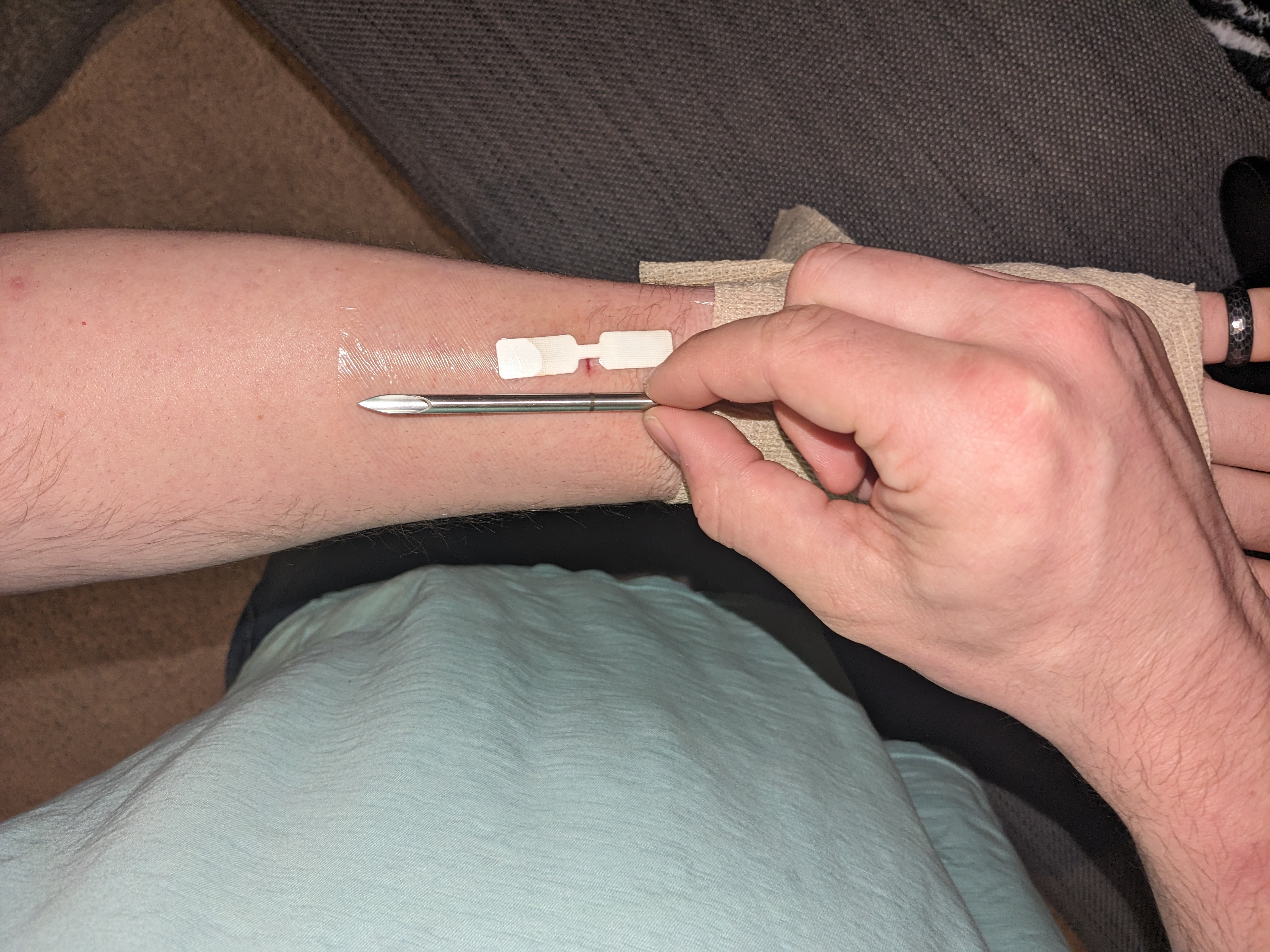Implant #5: SmartMX3 P71D321 Implant Success
Apr 25, 2023
Last week, I implanted a SmartMX3 P71D321 secure element chip in an ultra-thin, biosafe-polymer-enclosed form factor as provided by the Dangerous Things flexSecure implant in my left arm. This microprocessor + radio provides onboard compute and a 13.56Mhz NFC radio, with the chip accepting 200kB worth of Java Card applets (extremely feature-restrictive/resource-minimal Java). While this technology is not new (Java Card SmartCards have been around since the late 90’s), this body-safe form factor is impressive even when compared with newer implantable NFC chips thanks to Amal Grafstra’s research into biocompatible polymer-encased planar antenna technology.

The implantation was smooth but extremely painful as the planar form factor meant that rather than a plunger-based system, we instead used a 5mm diameter needle to open a 60mm deep pocket in my arm into which the chip was slipped. This was the first implant I was not holding the needle/scalpel for. That was bittersweet, but the depth, pain, and nerves made me glad I used a third-party body modification studio.
The chip is analogous (and in some cases, identical to) those in credit cards and smart passports, as well as being truly identical to the VivoKey Apex Flex, except that rather than having deployment keys managed by Visa (for credit cards) or the Fidesmo app ecosystem (for the Apex Flex), I maintain total control over my implant and decide which code runs on it.
Here’s a demo of one of the applets I’ve currently got loaded, a U2F token that lets my chip present itself as a two-factor auth token for websites like Google or Facebook, as well as offering key signing for usage in SSH connections.
Right now, I’m primarily using the chip for active U2F and for longer term PGP key storage on the go — the onboard compute and hyper-secure design means that I can do encryption/decryption on the chip itself without needing to bring keys onto untrusted platforms.
The chip natively uses a PC/SC for communication — generic smart card readers work just fine with it and Windows/iOS/Android interface (mostly) natively with it for auth (Macs do not support them terribly well). It can also emulate higher-level protocols such as NDEF for generic data storage.
Open source applets are available which allow the chip to act as a:
- Tesla valet key for unlock and startup
- TOTP token generator for securely-stored rotating MFA keys
- True YubiKey emulation, including appearing as a genuine Yubikey to Yubikey customization applications
- OpenPGP-compliant PGPCard, allowing secure storage and onboard encryption using PGP keys without revealing keys to untrusted devices
- Technical compatibility with wireless payment systems, although one wouldn’t be able to pay with it without being granted Visa/Mastercard’s secret keys, which they are barely willing to give to banks much less random biohackers (so, no payment with the chip)
I have further plans for some silly do-it-for-the-memes usages of the chip, including:
- on-chip tamagotchi to have a pet with me at all times
- on-chip ultra-tiny ML model or ELIZA-like chatbot to have a dumb AI inside my body
- world’s slowest bitcoin miner
This is absolutely the most useful chip I’ve got so far, and I’m really excited for it to have a long, functional life! 🤞